USB IP for UMC
Welcome to the ultimate USB IP for UMC hub! Explore our vast directory of USB IP for UMC
All offers in
USB IP
for UMC
Filter
Compare
99
USB IP
for UMC
from 7 vendors
(1
-
10)
-
Complete USB Type-C Power Delivery IP
- Mixed signal Analog Front End Macros for 65n, 130n, 150nm, and 180n technologies.
- RTL code from AFE to I2C compatible register set.
- Stand alone C code for Protocol, Device Policy Manager, and System Policy Manager.
- IP demonstration & development board, with compliance reports.
- Full chip integration of USB Type-C, and associated software.
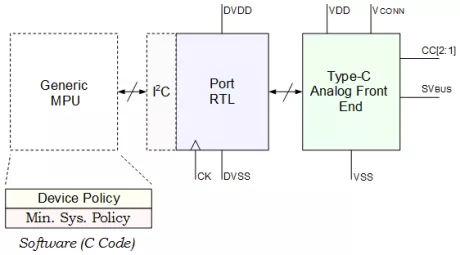
-
USB 2.0 picoPHY - UMC 40LP25, OTG
- Ported to over 50 different processes and configurations ranging from 65-nm to 14/16-nm FinFET
- Supports the USB 2.0 protocol and data rate (480 Mbps)
- Supports the USB Type-C specification
- USB femtoPHY, USB nanoPHY and USB picoPHY offer a tunability feature that allows quick, post-silicon adjustments that occur due to process variations, or unexpected chip and board parasitic, without modifying the existing design
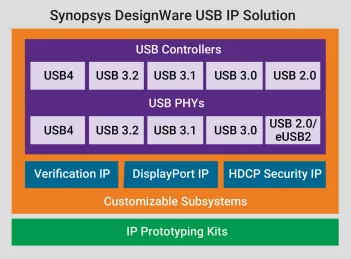
-
USB 2.0 femtoPHY - UMC 28HPC18 x1, OTG, North/South (vertical) poly orientation
- Ported to over 50 different processes and configurations ranging from 65-nm to 14/16-nm FinFET
- Supports the USB 2.0 protocol and data rate (480 Mbps)
- Supports the USB Type-C specification
- USB femtoPHY, USB nanoPHY and USB picoPHY offer a tunability feature that allows quick, post-silicon adjustments that occur due to process variations, or unexpected chip and board parasitic, without modifying the existing design
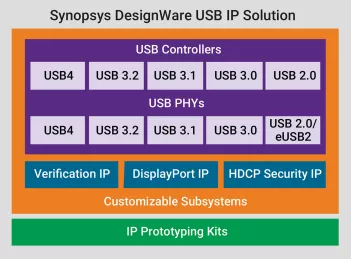
-
USB 2.0 picoPHY - UMC 28HLP18 x1, North/South (vertical) poly orientation
- Ported to over 50 different processes and configurations ranging from 65-nm to 14/16-nm FinFET
- Supports the USB 2.0 protocol and data rate (480 Mbps)
- Supports the USB Type-C specification
- USB femtoPHY, USB nanoPHY and USB picoPHY offer a tunability feature that allows quick, post-silicon adjustments that occur due to process variations, or unexpected chip and board parasitic, without modifying the existing design
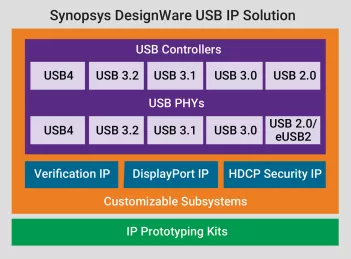
-
USB 2.0 femtoPHY - UMC 28HLP18 x1, North/South (vertical) poly orientation
- Ported to over 50 different processes and configurations ranging from 65-nm to 14/16-nm FinFET
- Supports the USB 2.0 protocol and data rate (480 Mbps)
- Supports the USB Type-C specification
- USB femtoPHY, USB nanoPHY and USB picoPHY offer a tunability feature that allows quick, post-silicon adjustments that occur due to process variations, or unexpected chip and board parasitic, without modifying the existing design
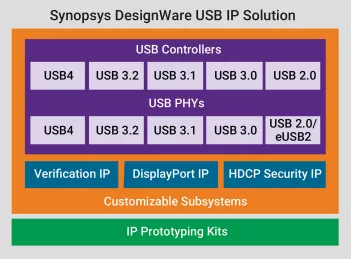
-
USB 2.0 femtoPHY - UMC 22ULP18 x1, OTG, North/South (vertical) poly orientation
- Ported to over 50 different processes and configurations ranging from 65-nm to 14/16-nm FinFET
- Supports the USB 2.0 protocol and data rate (480 Mbps)
- Supports the USB Type-C specification
- USB femtoPHY, USB nanoPHY and USB picoPHY offer a tunability feature that allows quick, post-silicon adjustments that occur due to process variations, or unexpected chip and board parasitic, without modifying the existing design
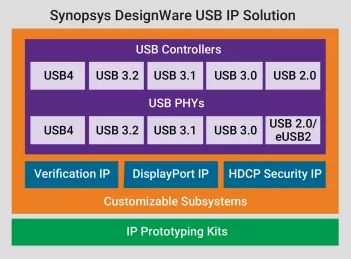
-
USB2.0 build-in clock PHY, UMC 40LP, type-C
- Smallest USB 3.2 Gen1x1 BCK PHY IP worldwide (e.g. IP size @40nm <0.36mm²)
- Fully compliant with Universal Serial Bus USB 3.2 Gen1x1, 2.0, and 1.1 electrical specifications
- Supports clock outputs from the internal BCK module
- Real-time calibrations to ensure frequency accuracy

-
USB3.0 build-in clock PHY, UMC 40LP, type-C
- Smallest USB 3.2 Gen1x1 BCK PHY IP worldwide (e.g. IP size @40nm <0.36mm²)
- Fully compliant with Universal Serial Bus USB 3.2 Gen1x1, 2.0, and 1.1 electrical specifications
- Supports clock outputs from the internal BCK module
- Real-time calibrations to ensure frequency accuracy

-
PCIe 3.0/3.1/USB3.0/SATA3 Combo PHY
- Standard PHY interface enables multiple IP sources for PCI Express Logical Layer and provides a target interface for PCI Express PHY vendors.
- Supports 2.5Gb/s only or 2.5Gb/s,5.0Gb/s and 8.0Gb/s serial data transmission rate
- Utilizes 8-bit, 16-bit or 32- bit parallel interface to transmit and receive PCI Express data
- Allows integration of high speed components into a single functional block as seen by the endpoint device designer.
-
USB 3.0 PHY in UMC (65nm, 40nm)
- Complete mixed-signal physical layer for USB 3.0 applications
- Includes all circuitry needed for operation at all USB speeds (SuperSpeed, High-Speed, FullSpeed, Low-Speed)
- USB-C 3.0 femtoPHY supports Type-C reversible connectors
- Optimized PHY area (<0.5mm2 for USB 3.0, <0.8mm2 for USB-C 3.0)